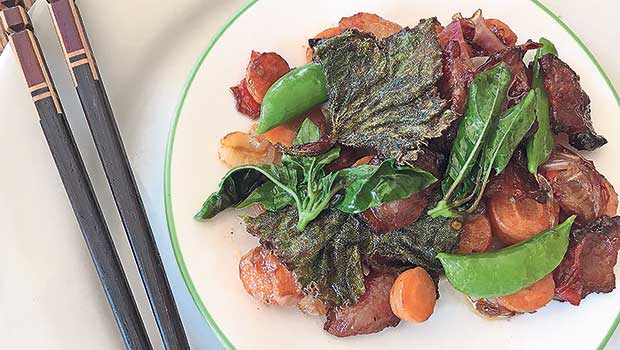
I learned about the mercado al aire libre in high school Spanish, and the phrase — which means “open air market,” or literally, “market of the free air” — turned up again in college. Mercado al aire libre is a great teaching tool, in that it clues you in to four dynamic words.
In South America, where I spent a year tooling around, I finally had to stop asking where it was. Nobody on the street seemed familiar with the concept. Indeed it was self-evident. Obviously the market is open-air.
Virtually every community in the world has a market, and many towns and cities have multiple market options.
If somebody is familiar with a market in their hometown, they speak it, and can operate in a market as a buyer or even as a seller without speaking a lick of the local tongue. As long as the customer has money and the vendor has product, and there are enough fingers to communicate numbers — or ideally a calculator to pass back and forth like an ancient writing tablet — the market poses no language barrier.
So it’s no wonder that farmers markets, as we call them here, are often a welcoming type of place to new arrivals. What better way to become acquainted with one’s new home ground, and the plants that grow there?
This is especially true for immigrants who come from farmy places, who quickly adapt to local growing conditions and become vendors. My town is home to a large population of Russian-speaking Eastern European immigrants, and Hmong, a Southeast Asian tribe from the hills and mountains of Laos, Cambodia, Myanmar, China, Thailand and Vietnam.
The Russians have figured out how to grow their cucumbers, dill and horseradish, while the babushkas bring amazing quantities of potatoes. The Hmong, meanwhile, are keen observers of what grows and sells well here, bringing an assortment more in line with what you would expect from a small diversified vegetable farm. They have also taken to the local hills and mountains, especially the elders, who bring impressive quantities of huge, beautiful huckleberries and morels to sell at market.
As they’ve adapted, they’ve employed some tricks from home, like the eating of young squash leaves. Check out the recipe at right.
Hmong Squash Leaves
• 1 or 2 pieces of bacon, cut crosswise into 1-inch chunks (alternatively, cooking oil of your choice)
• 2 or 3 squash (or zucchini or pumpkin) leaves, on the young side, so they are tender and small and can be left whole. Trim out the stems. Note: Recipe can be made without leaves.
• Garden veggies (I use homegrown peas, basil, tomatoes, garlic, Hmong-grown baby carrots and onion. I considered using market zucchini, but my dish felt busy enough.)
• Soy sauce
• Fish sauce or oyster sauce
• Lime juice or rice vinegar
Cook the bacon in a pan on low-ish. When it starts to give up the grease, add the squash leaves and help them lay flat in the pan in the grease. Monitor both leaves and bacon, turning when necessary and steering them into a light crisp. Remove each leaf and bacon slice when ready.
Add the carrots, sliced, to the grease, and the sliced onion, turning up the heat as necessary for a steady, mellow cooking. Add tomatoes in chunks, ginger if you have it, and garlic, along with a squirt of fish or oyster sauce.
Finally, add the peas, basil and soy sauce, and stir-fry for just a second. Add back the bacon and squash leaves, add pinches of black pepper and garlic powder, and a dash of lime juice or rice vinegar, and stir around one more time. Serve with hot sauce and rice.
Email flash@flashinthepan.net.




![Banner [Virtual] Art Gallery](https://baystatebanner.com/wp-content/uploads/2024/04/NJ-H_1-713x848.jpg)

